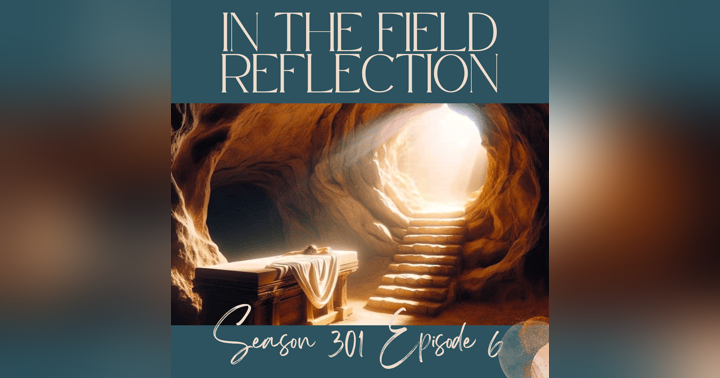Waiting for His Return: The Meaning of Christ’ s Departure

The final episode of The Kiss, the Cross and the Crown Easter mini-series takes us on a profound journey through the aftermath of Christ's resurrection and His glorious ascension. This transformative period marks not an ending but a beautiful beginning—the birth of a sacred mission that continues to this day, calling believers to share His message while faithfully waiting for His return.
The episode opens at the empty tomb where Mary Magdalene encounters Jesus in the garden. Her initial grief at finding the tomb vacant transforms into overwhelming joy when Jesus speaks her name. This intimate moment of recognition—where Jesus calls Mary by name—serves as a powerful reminder that Christ's resurrection is not merely a historical event but a personal encounter. Mary doesn't simply witness the resurrection; she experiences a relationship with the risen Lord who knows her personally. This relationship becomes the foundation for the authentic witness she carries to others.
The disciples' reactions to the empty tomb and subsequent appearances of Jesus illustrate the universal human struggle between doubt and faith. Peter and John discover the empty tomb with its carefully folded burial cloths—not the scene of grave robbery, but a deliberate message. The folded napkin, according to Jewish custom, signified a master's intention to return to the table. Christ's empty tomb wasn't just evidence of resurrection; it was a promise of His continued presence and eventual return.
Perhaps most revealing is Thomas's journey from skepticism to profound faith. His famous declaration—"Unless I see the nail marks in his hands and put my finger where the nails were, and put my hand into his side, I will not believe"—resonates with anyone who has ever questioned or sought tangible evidence of God's reality. Jesus's response to Thomas demonstrates that He meets us in our doubt rather than condemning it. When Jesus returns and invites Thomas to touch His wounds, doubt transforms into one of scripture's most powerful confessions of faith: "My Lord and my God!" This narrative reminds us that authentic faith isn't the absence of questions but the presence of trust despite our uncertainties.
The forty days between resurrection and ascension were filled with Jesus's appearances and teachings about the Kingdom of God. These encounters weren't merely to prove His resurrection but to prepare His followers for their mission. The episode culminates with the majestic ascension scene on the Mount of Olives, where Jesus commissions His disciples with what we now call the Great Commission—to make disciples of all nations. This pivotal moment transitions Jesus's earthly ministry to the Spirit-empowered mission of the church.
What makes this narrative so compelling is that it doesn't end with closure but with continuation. The disciples returned to Jerusalem not in despair but with purpose. The ascension wasn't an abandonment but an empowerment—Jesus departed physically so His Spirit could indwell believers universally. This transition marks the birth of our shared mission, a sacred calling that extends through generations to every believer today.
The episode concludes with a powerful challenge: What happens when the miracles fade into memory and the Teacher is no longer physically present? Jesus chose ordinary, flawed people to carry His extraordinary message, and He continues to call the unlikely and equip the willing. The question isn't whether we're qualified; it's whether we'll respond to His call. The resurrection and ascension narrative isn't simply a historical account to be remembered but a living commission to be fulfilled until Christ returns.

















